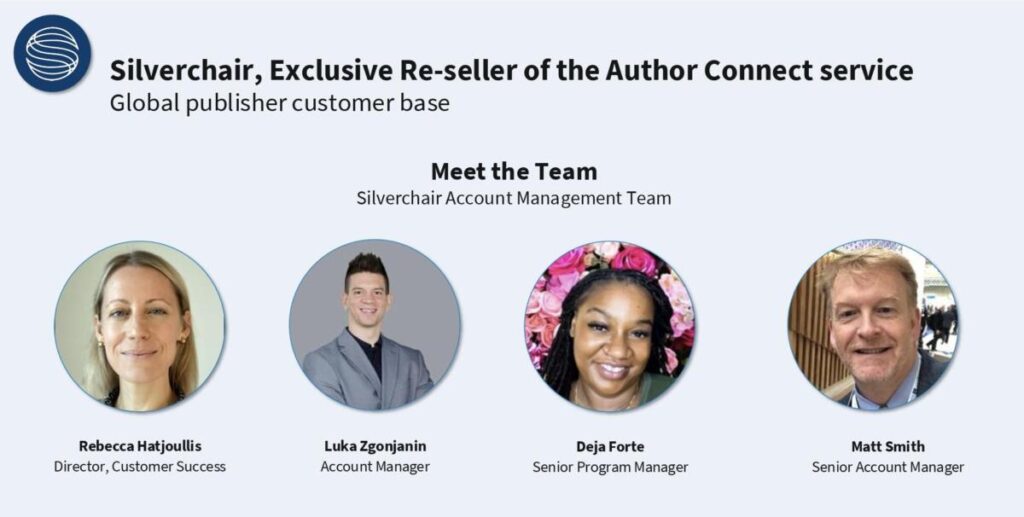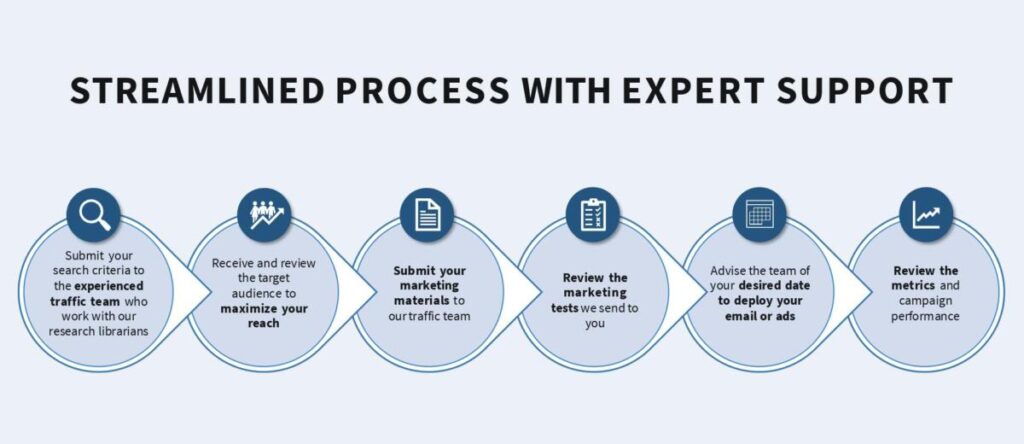Recently, our team hosted a webinar exploring how Web of Science Author Connect helps publishers achieve these goals through precision targeting and strategic campaign execution. The team was joined by Maria Campbell of CABI, who shared her experience leveraging the service. Read a recap of the session below, and view the full recording here.

The Foundation: Web of Science as the Gold Standard
Author Connect stands apart from generic email marketing services by leveraging the Web of Science database, which represents the most trusted and rigorously curated research dataset available. The platform provides access to over five million indexed researchers across 26,000 journals, covering sciences, social sciences, arts and humanities, and the Emerging Sources Citation Index. This publisher-neutral database is meticulously maintained through continuous curation, ensuring that publishers reach researchers who are actively publishing cutting-edge work in their fields.The sophistication of the targeting capabilities reflects the depth of the Web of Science data. Publishers can identify audiences based on publishing behavior, funding sources, open access preferences, citation patterns, keywords, and even H-index parameters. Additional filters allow for refinement by country, institution, career stage, and previous engagement with campaigns. This level of precision moves far beyond basic list purchasing, enabling publishers to build custom audiences aligned with specific campaign objectives.
Current Performance and Industry Benchmarks
The 2025 performance statistics demonstrate strong engagement across multiple channels. Email campaigns are achieving a unique open rate of nearly 29% and a unique click rate of 2.26%, with a click-to-open rate above 8%. These metrics significantly exceed typical industry benchmarks for cold outreach to research audiences. Social media amplification through LinkedIn generates an average of 97,000 impressions per campaign, while digital retargeting ads deliver approximately 49,000 impressions and Facebook campaigns contribute close to 47,000 impressions.Timing analysis reveals that midweek deployments consistently outperform other scheduling options. Wednesday emerges as the optimal day for both clicks and opens, followed closely by Tuesday and Thursday. This data reflects when researchers are most likely to engage with professional communications during their working week. The traffic team continuously monitors these patterns across different subject categories and promotion types, providing clients with actionable insights for optimizing future campaign strategies.
Real-World Application: A Publisher's Perspective
Maria Campbell from CABI Journals shared practical insights from several years of experience using Author Connect as a core component of their marketing strategy. For CABI, which publishes a relatively small portfolio of journals, Author Connect provides essential reach beyond their organic author network. The service has proven particularly valuable for their society partner, the International Society of Horticultural Science, helping to expand the journal's visibility beyond existing membership circles.Campbell emphasized the value of specific features including A/B testing, optimized send times, and reblast capabilities. She noted that while campaign results naturally vary, CABI generally meets or exceeds established benchmarks.
One standout example Campbell shared involved a 2023 campaign targeting early career researchers from the Global South for an editor training and mentoring program. The first mailing generated strong application volume, resulting in nine mentees appointed to the editorial board. Three of those mentees have since become full associate editors. A follow-up campaign offering APC waivers to the same audience generated nine waiver acceptances, with two articles already published. This campaign demonstrated how Author Connect can support objectives beyond traditional submission drives, including talent development and community building initiatives.
Strategic Partnership Approach
This partnership orientation emphasizes long-term relationship building over one-off campaign wins. Author decisions about where to publish rarely result from a single email exposure. Instead, consistent, valuable communication over time builds awareness and trust. Publishers using Author Connect strategically view it as a nurturing program that maintains their presence in researcher inboxes with relevant, timely messages about submission opportunities, author services, open access options, and conference participation.
Flexible Contracting and Campaign Options
The service accommodates different publisher needs and budget structures through flexible contracting arrangements. Prepaid yearly contracts provide the most favorable cost per record and enable advance budget planning and approval processes. These contracts can be customized based on specific campaign volumes, audience sizes, and channel preferences. For publishers with uncertain budgets or those wanting to test the service, one-off campaigns remain available without long-term commitment requirements.Campaign packages range from standard configurations to highly customized solutions developed over time with experienced users. Publishers can choose to create their own HTML templates or leverage design support from the team. Options include follow-up emails to previous audiences, reblasts to non-openers, and layered campaigns combining different promotion objectives. The research team works directly with publishers to refine targeting parameters and achieve the precise audience composition needed for each campaign objective.
Operational Excellence and Support Infrastructure
Three specialized teams collaborate to deliver campaigns efficiently. The traffic team serves as the primary client interface, managing orders, coordinating testing, and ensuring smooth delivery processes. The research team, comprised of expert research librarians, builds and refines Web of Science datasets based on client requirements. An external service bureau manages campaign execution, performance tracking, GDPR compliance, and reporting delivery.The process follows a straightforward workflow beginning with criterion submission from the publisher. The research team develops the target list and works through refinements with the client until the audience composition aligns with campaign objectives. Once approved, the publisher submits marketing materials for testing and review before deployment. Performance metrics become available within 24 hours of campaign launch, with comprehensive reporting following shortly after.
Clients consistently highlight the responsiveness and coordination across team members. Despite managing numerous concurrent campaigns, team members remain fully briefed on individual campaign details and demonstrate strong attention to detail during the campaign build process. The collaborative dynamic extends to offering strategic guidance on targeting approaches, especially when publishers are uncertain about the best parameters for reaching their desired audience.
Looking Ahead: Q4 Promotional Opportunities
Several promotional activities for Q4 provide additional value for publishers planning their final campaigns of 2025 or preparing 2026 budgets. Campaigns deployed in Q4 can add social media channels at a 25% discounted rate before year-end, whether through LinkedIn, Facebook, or digital retargeting. This represents an opportunity for publishers who have wanted to test social amplification but found it challenging to fit within existing budget allocations.Publishers can commit to contracts in Q4 with invoicing this year while scheduling campaign deployment for Q1 of next year. This approach helps marketing teams secure or increase annual budgets by demonstrating full utilization of current allocations. November campaigns receive 10% additional contacts for datasets at no additional cost, providing meaningful audience expansion regardless of campaign size.
These promotional opportunities align with natural planning cycles as publishers finalize their marketing strategies for the coming year. Early conversations about 2026 campaign calendars, budget requirements, and strategic objectives enable more thoughtful audience development and messaging approaches. Publishers benefit from proactive planning that aligns Author Connect campaigns with broader journal development initiatives, conference schedules, and key publication milestones.
Key Takeaways for Publishers
The webinar reinforced several fundamental principles for successful author marketing in scholarly publishing. First, data quality matters profoundly. The Web of Science foundation ensures publishers reach actively publishing researchers rather than stale or generic contact lists. Second, precision targeting enables efficient budget utilization by focusing outreach on researchers most likely to find the message relevant based on their publishing history and subject expertise.Third, consistent engagement builds relationships over time rather than expecting immediate conversion from single exposures. Publishers who integrate Author Connect into their ongoing marketing strategies and maintain regular communication with their target communities achieve the strongest results. Fourth, campaign performance improves through continuous optimization based on testing, analytics review, and strategic refinement of audience parameters and messaging approaches.
Finally, the partnership between publisher expertise and Author Connect capabilities produces the most effective outcomes. Publishers bring deep understanding of their journals, their competitive positioning, and their strategic priorities. The Author Connect team contributes platform capabilities, data insights, and campaign execution experience. When these combine through collaborative planning and ongoing dialogue, publishers develop increasingly sophisticated approaches to community building and manuscript generation.
